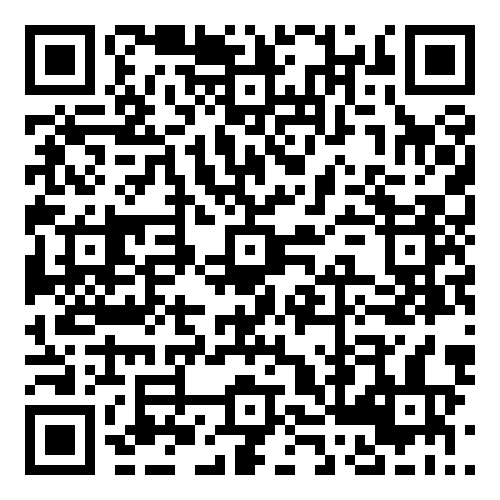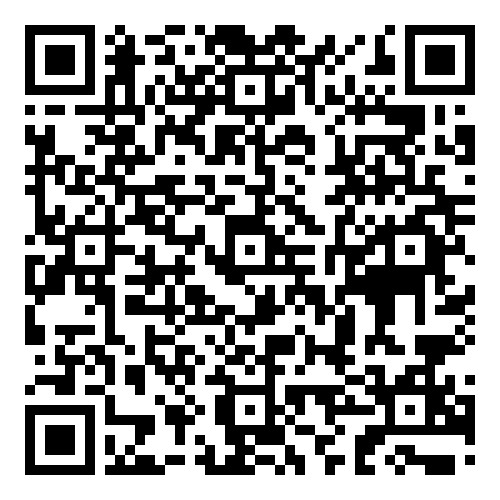FAQs
- At the global level, the 17 Sustainable Development Goals (SDGs)
- And 169 targets of the new agenda will be monitored and reviewed using a set of global indicators. The global indicator framework, to be developed by the Inter Agency and Expert Group on SDG Indicators (IAEA-SDGs), will be agreed on by the UN Statistical Commission by March 2016. The Economic and Social Council and the General Assembly will then adopt these indicators.
- Governments will also develop their own national indicators to assist in monitoring progress made on the goals and targets.
- Chief statisticians from Member States are working on the identification of the targets with the aim to have 2 indicators for each target. There will be approximately 300 indicators for all the targets. Where the targets cover cross-cutting issues, however, the number of indicators may be reduced.
- The follow-up and review process will be informed by an annual SDGs Progress Report to be prepared by the Secretary-General.
- The annual meetings of the High-level Political Forum on sustainable development will play a central role in reviewing progress towards the SDGs at the global level. The means of implementation of the SDGs will be monitored and reviewed as outlined in the Addis Ababa Action Agenda, the outcome document of the Third International Conference on Financing for Development, to ensure that financial resources are effectively mobilized to support the new sustainable development agenda.
The Goals and targets will stimulate action over the next 15 years in areas of critical importance: people, planet, prosperity, peace and partnership.
- People – to end poverty and hunger, in all their forms and dimensions, and to ensure that all human beings can fulfil their potential in dignity and equality and in a healthy environment.
- Planet – to protect the planet from degradation, including through sustainable consumption and production, sustainably managing its natural resources and taking urgent action on climate change, so that it can support the needs of the present and future generations.
- Prosperity – to ensure that all human beings can enjoy prosperous and fulfilling lives and that economic, social and technological progress occurs in harmony with nature.
- Peace – to foster peaceful, just and inclusive societies free from fear and violence. There can be no sustainable development without peace and no peace without sustainable development.
- Partnership – to mobilize the means required to implement this agenda through a revitalized global partnership for sustainable development, based on a spirit of strengthened global solidarity, focused in particular on the needs of the poorest and most vulnerable and with the participation of all countries, all stakeholders and all people.
The Sustainable Development Goals (SDGs), also known as the Global Goals, were adopted by all United Nations Member States in 2015 as a universal call to action to end poverty, protect the planet and ensure that all people enjoy peace and prosperity by 2030. At the heart of the “2030 Agenda for Sustainable Development” are 17 Sustainable Development Goals (SDGs) and 169 related targets that address the most important economic, social, environmental and governance challenges of our time.
A development is sustainable if it ‘meets the needs of the present without compromising the ability of future generations to meet their own needs’.
The Sustainable Development Goals (SDGs) are in principle voluntary and so are not binding. This means there will be no consequences should certain countries not achieve certain goals. The political and moral pressure to achieve the Agenda, however, is significant. Moreover, many SDGs refer to existing international agreements, which are legally binding, such as ILO conventions around decent work or Human Rights.
There are a number of ways individuals can help achieve the global goals: Raise awareness by talking to your friends and family; get involved in an issue you care about; and make sure your leaders know that the Goals matter to you. And check out MYWorld 2030. The pledge to leave no one behind is embedded at the heart of the Sustainable Development Goals. It means that the international community has agreed to make a concerted effort to identify and lift up those who are furthest behind first. This means targeting the most vulnerable people who societies so often miss: from youth, and especially girls; to refugees and migrants; to rural farmers and indigenous populations – and so many others living on the margins of society. It’s about giving voice to those who are furthest behind, but who stand to gain the most as we embark on implementing this ambitious agenda.
It’s significant because it means we have learned a key lesson from the Millennium Development Goals. While they were successful in many ways, it turned out that most countries measured progress in averages – which means that we were leaving out core segments of society. For example, while the world made important progress in reducing poverty overall, often the poorest and most disadvantaged populations, such as adolescent girls in rural communities who face gender discrimination and geographic barriers, did not share in that progress. This time around, governments have pledged to leave no one behind, which means working toward shared progress – so that progress does not only benefit those near the top of society, but also those who are so often on the margins. It’s taking a bottom up approach to development, which has not been the norm.
Yes, the SDGs are identical for all countries. Of course the context differs from one country to another. India will approach poverty and hunger in a different way than Kenya. So every country will have to decide for itself on the way to achieve the SDGs.
The 17 Sustainable Development Goals (SDGs) with 169 targets are broader in scope and go further than the Millennium Development Goals (MDGs) by addressing the root causes of poverty and the universal need for development that works for all people. These goals cover the three dimensions of sustainable development: economic growth, social Inclusion and environmental protection. Building on the success and momentum of the MDGs, the new global goals cover more ground with ambitions to address inequalities, economic growth, decent jobs, cities and human settlements, industrialization, energy, climate change, sustainable consumption and production, peace and justice. The new goals are universal and apply to all countries, whereas the MDGs were intended for action in developing countries only. A core feature of the SDGs has been the means of implementation–the mobilization of financial resources– as well as capacity–building and the transfer of environmentally sound technologies. The new goals recognize that tackling climate change is essential for sustainable development and poverty eradication.
These SDGs apply to everyone. This does not just mean all countries in the world. However, it also means every citizen, organization, local authority and company. Everyone will need to do their bit! By making sustainable choices and undertaking sustainable actions, you too can contribute towards achieving the SDGs.
The continuous, methodical process of collecting data and information throughout a project so that corrective action can be taken.
A systematic and objective process that periodically assesses a project against certain standards of acceptability.
Monitoring is the routine collection of information to track progress, while evaluation is used to determine the relevance and fulfillment of objectives, developmental efficiency, effectiveness, impact and sustainability.
Monitoring and Evaluation (M&E) is a process that helps improve performance and achieve results. Its goal is to improve current and future management of outputs, outcomes and impact.
Results-Based Management is a tool for monitoring and managing the implementation of strategy favoured particularly by organizations and agencies that are part of or are linked to.
Kindly no, but there are some Universities in the Country in collaboration with M&E Directorate that offer trainings in M&E which you may contact such as:
- African Nazarene University
- Strathmore University
- Mount KenyaUniversity
- University of Nairobi
- Maseno University
- Daystar University
- Masinde Muliro University
- Jomo Kenyatta University of Agriculture and Technology
- Karatina University
- Kenya School of Government
No, MED is Monitoring and Evaluation Directorate in the State Department for Planning at The National Treasury and Planning.
Will programme benefits last once external funding has stopped?
The M&E framework measures program performance and the others measure staff performance and only the M&E framework has inputs and process, outputs, outcomes and impact.
It includes; the objectives, assumptions, indicators and a summary of activities.
An evaluation can use quantitative or qualitative data, and often includes both. Both methods provide important information for evaluation, and both can improve community engagement. These methods are rarely used alone; combined, they generally provide the best overview of the project.
The Stakeholder analysis, SWOT (strengths, weaknesses, opportunities and threats) analysis and Problem tree analysis.
At the time when you plan the project.
Steps are: the Initial assessment, Planning, Implementation, Monitoring and, Evaluation.
A desired measure on an indicator at the end of the project or at a specific time in the project.
What informs target setting?
- Resources available.
- Performance by the department in the previous year.
- The measure on the baseline.
Impact, Outcome and Output indicators
- 30% people aged 15-24 who report more than one sex partner in the past 12 months.
- % people who have more than one sex partner in the past 12 months.
- % people aged 15-24 who report more than one sex partner in the past 12 months.
Answer: c
The types of indicators are qualitative and quantitative
Indicators are realistic and measurable criteria of project progress. They should be defined before the project starts, and allow us to monitor or evaluate whether a project does what it said it would do. Indicators usually describe observable changes or events which relate to the project intervention.
An indicator is a tool that helps one to know whether the work is making a difference. Indicators are signs of progress – they are used to determine whether the programme/intervention or progress is being made or is on its way to achieving its objectives and goals.
CIMES is the County Integrated Monitoring and Evaluation Systems. Is a replica of NIMES at the County level. In addition, monitoring and evaluation of policies, programmes and projects in the County level to provide feedback to policy makers for decision making.
NIMES is the National Integrated Monitoring and Evaluation Systems.
It was established to track all Government Programmes, Progress of implementation of ERS and subsequently the Kenya Vision 2030 through its MTPs and to integrate all M&E systems in the Public Sector at the National level.
These are: M&E Framework, M&E Guidelines, M&E Plans, Performance indicators, and Public Expenditure Tracking Survey.
Monitoring will show whether the intended results are being achieved as planned and it indicates whether the initiatives are making positive contribution towards development.
Evaluation provides feedback that can be used to improve programming, policy, and strategy and identifies unintended results and consequences of development initiatives.



